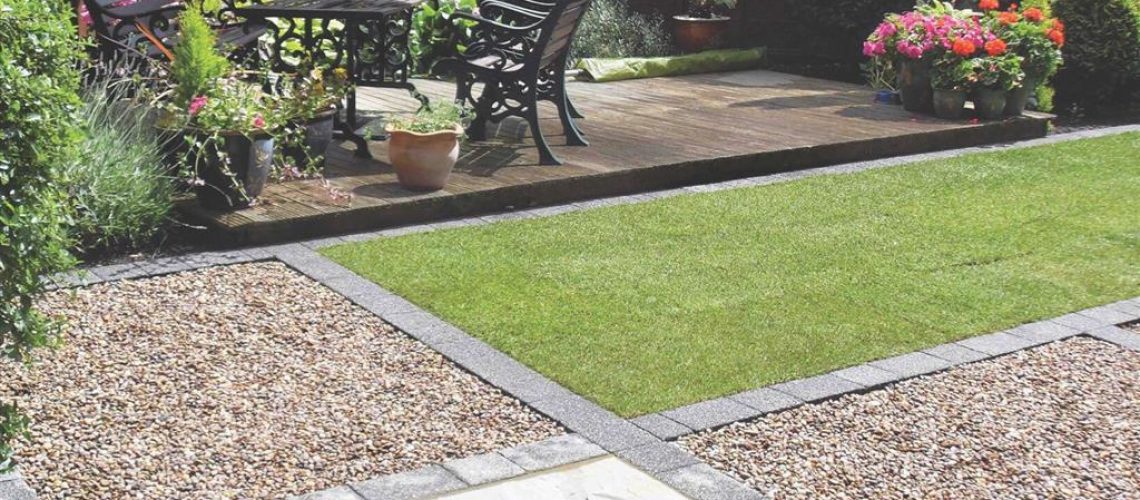Larger areas will require a skilled paver but you can install block paving on smaller areas provided you follow these steps carefully and are prepared for the physical labour involved which most contractors are.
Preparing The Area
Regardless of what was there before, you need to ensure a solid base for you block paving. This means removing the existing surface and leaving enough space for at least 4 inches of base for the area.
This base needs to be the equivalent of Type 1 Hardcore which is semi permeable yet once you have compacted should become fairly solid.
During this stage you need to make sure you have set your levels approximately to what you will require for dealing with drainage on your driveway or patio area.
Paving Edging and Borders
This would be the ideal stage to put in your edge restraints if you require any. If you are looking to have a flush finish with whatever is there, you don’t. If however you have lawn beside it, soil or something similar, you should always put in an edging.
The edging can really be anything you would like and normally its just a standard kerb, block paving kerb or a block paving brick which is benched in concrete on its side.
Paving base
This is where you would first lay down your membrane sheeting. This helps to prevent weed growth on the area. Once you have membrane sheeting down, you can put little spots of sand to keep it in place.
Spread sand all over the area, we recommend a coarse sand as its permeable, and you set accurate levels on it.
To set the required levels, make sure you have pulled string line levels from points of A to B to ensure an accurate water fall and screeding is done by pulling a screeding bar along 2 metals channels which have been set to the required heights.
Laying The Patterns
The laying of concrete block paving should always begin from the bottom of any slope, preferably starting from a right angle or a straight edge. Working from several packs at a time is essential when using a mixed size product such as cobble styled paving blocks.
Depending on the type of paving and the pattern you are installing, you will need to either lay it staggered or in a herringbone pattern. We recommend having a line pulled from the 90 degree angle of whatever point you choose.
Lay the paving off the string line in a herringbone pattern and simply keep repeating it line by line until you have filled the area with block paving.
Bordering is normally done after this by going around the paving and adding it to the outside of the paving. We say normally, but sometimes if there will be vehicular traffic going to the edges of the border, we recommend setting them in before you screed the sand with concrete.
Lastly, cut the block paving with a diamond blade saw or a block splitter (you can hire both of these but if you are inexperienced, we recommend the block splitters for safety). Cut the gaps using a paving pencil or chalk stick to mark the paving exactly to fit the gap between the paving and the border.
Make sure if the block paving has not been in set in concrete and is not being retained by edging, to back up the borders with concrete to ensure it does not move.
Jointing of the block paving is preferably completed in dry periods. We apply kiln dried sand to the block paved area, then brush into the joints using a soft brush, ensuring the joints are filled fully.
You can compact the block paving with a vibrator plate. This is a machine which runs over paving and vibrates down, hard, in a small square area. This is more than strong enough for any type of block paving. For clay bricks, we recommend using a vibrator plate with a rubber mat to protect them.
Once you have compacted the block paving, you should top back up the paving joints with some more kiln dried sand and brush off the entire area.

